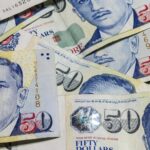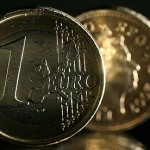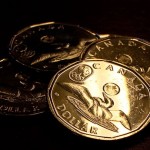Yesterday’s trade saw GBP/SEK within the range of 11.6528-11.7064. The pair closed at 11.6554, losing 0.10% on a daily basis.
At 7:27 GMT today GBP/SEK was up 0.12% for the day to trade at 11.6721. The pair touched a daily high at 11.6751.
Fundamentals
United Kingdom
Gross Domestic Product – second estimate
The second estimate of United Kingdoms GDP probably confirmed the preliminary estimate, released on October 24th, that economy expanded at a rate of 3.0% during the third quarter of the year compared to the same period a year ago. UK economy grew at an annualized rate of 3.2% in the second quarter of the current year, or the fastest annual rate of growth since Q3 2007, when the GDP rose 3.3%.
According to the preliminary data, agriculture output rose 0.9% year-on-year in Q3. Industrial production expanded 2.2%, supported by a 6.1% increase in electricity, gas, steam and air production. Mining activity shrank 1.8%, manufacturing activity expanded 3.4%, while construction output rose 3.0% during the quarter. The sector of services grew 3.3% year-on-year, mostly due to a 4.3% surge in business and financial activities and a 3.8% increase in distribution, hotels and restaurants, according to the Office for National Statistics (ONS).
On a quarterly basis, the second estimate of UK GDP probably also matched the first estimate of a 0.7% growth during Q3, following a 0.9% expansion during the second quarter.
The GDP represents the total monetary value of all goods and services produced by one nation over a specific period of time. What is more, it is the widest indicator of economic activity in the country. The report on GDP is of huge importance for traders, operating in the Foreign Exchange Market, as they will usually look for higher rates of growth as a sign that interest rates will follow the same direction. Higher interest rates will usually attract more investors, willing to purchase assets in the UK, while, at the same time, this will increase demand for the pound. Therefore, in case growth rate exceeded market expectations, this would provide support to the local currency. The Office for National Statistics is expected to release the second (revised) GDP estimate at 9:30 GMT.
Sweden
Consumer confidence and business confidence
Confidence among consumers in Sweden probably improved in November, with the corresponding gauge rising to a reading of 98.6, according to the median estimate by experts. In October the index of confidence was reported at 98.0.
The Consumer Confidence Indicator (CCI) signifies what household plans to purchase durable goods are and what the level of consumer sentiment on the economic situation in Sweden, personal finances, inflation and savings is. The survey encompasses a sample of 1 500 households, interviewed on a monthly basis. The indicator represents the difference between respondents, who gave a positive opinion, and those, who gave a negative opinion. Readings between 90 and 100 indicate weaker than normal confidence, while readings between 100 and 110 indicate stronger than normal confidence. Any improvement in the gauge of sentiment, which exceeds market expectations, usually supports the krone.
Swedens National Institute of Economic Research is expected to release the official data at 8:00 GMT.
At the same time, business confidence in the country probably remained almost unchanged in November. The respective gauge probably slipped to 105.7 from 105.8 during the prior month. The latter has been the highest level of confidence since February, when the index stood at 106.6.
Balance of trade
The surplus on Swedens balance of trade probably expanded to SEK 2.7 billion in October, according to market expectations, from SEK 1.4 billion in the prior month. Total exports were at the amount of SEK 101.2 billion in September, while total imports were valued at SEK 99.8 billion. Compared to September a year earlier, the value of exports rose 9%, while the value of imports soared 14%.
The seasonally adjusted trade surplus amounted to SEK 0.2 billion in September, compared to a surplus figure of SEK 0.5 billion in August.
Nations major exports include machinery, motor vehicles, paper products, pulp and wood, iron and steel products, chemicals, while major imports are machinery, petroleum and petroleum products, chemicals, motor vehicles, iron and steel.
The trade balance, as an indicator, measures the difference in value between a country’s exported and imported goods and services during the reported period. It reflects the net export of goods and services, or one of the components to form the Gross Domestic Product. Generally speaking, exports reflect economic growth, while imports indicate domestic demand.
In case the trade balance surplus expanded more than anticipated, this would have a bullish effect on the krone. Statistics Sweden is expected to release the official trade numbers at 8:30 GMT.
Pivot Points
According to Binary Tribune’s daily analysis, the central pivot point for the pair is at 11.6715. In case GBP/SEK manages to breach the first resistance level at 11.6903, it will probably continue up to test 11.7251. In case the second key resistance is broken, the pair will probably attempt to advance to 11.7439.
If GBP/SEK manages to breach the first key support at 11.6367, it will probably continue to slide and test 11.6179. With this second key support broken, the movement to the downside will probably continue to 11.5831.
The mid-Pivot levels for today are as follows: M1 – 11.6005, M2 – 11.6273, M3 – 11.6541, M4 – 11.6809, M5 – 11.7077, M6 – 11.7345.
In weekly terms, the central pivot point is at 11.6396. The three key resistance levels are as follows: R1 – 11.7740, R2 – 11.8603, R3 – 11.9947. The three key support levels are: S1 – 11.5533, S2 – 11.4189, S3 – 11.3326.





